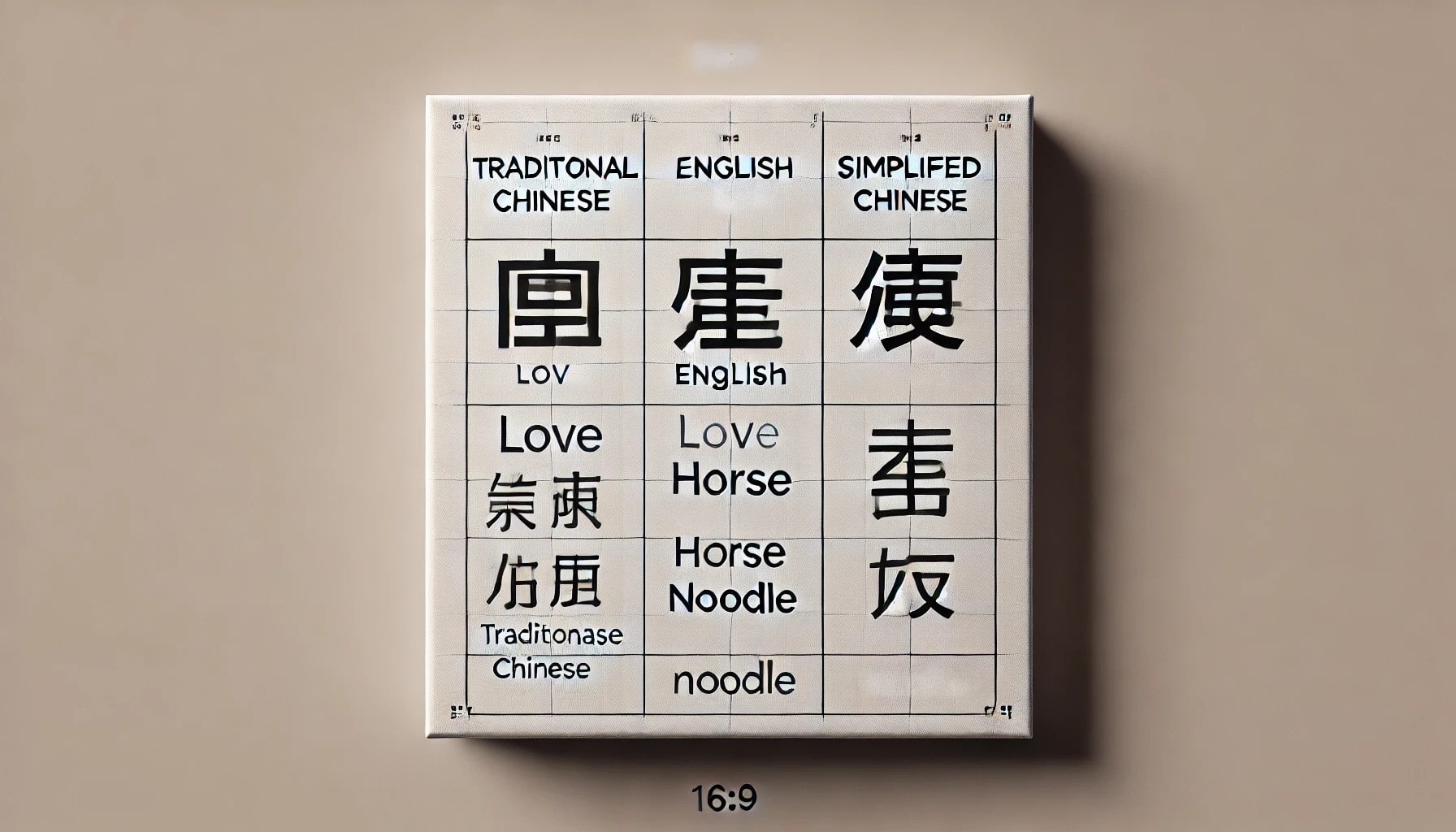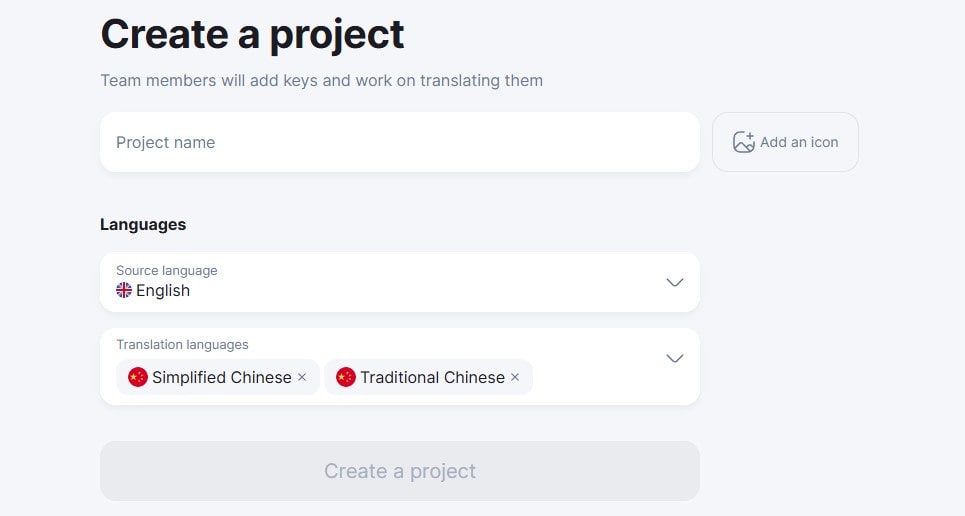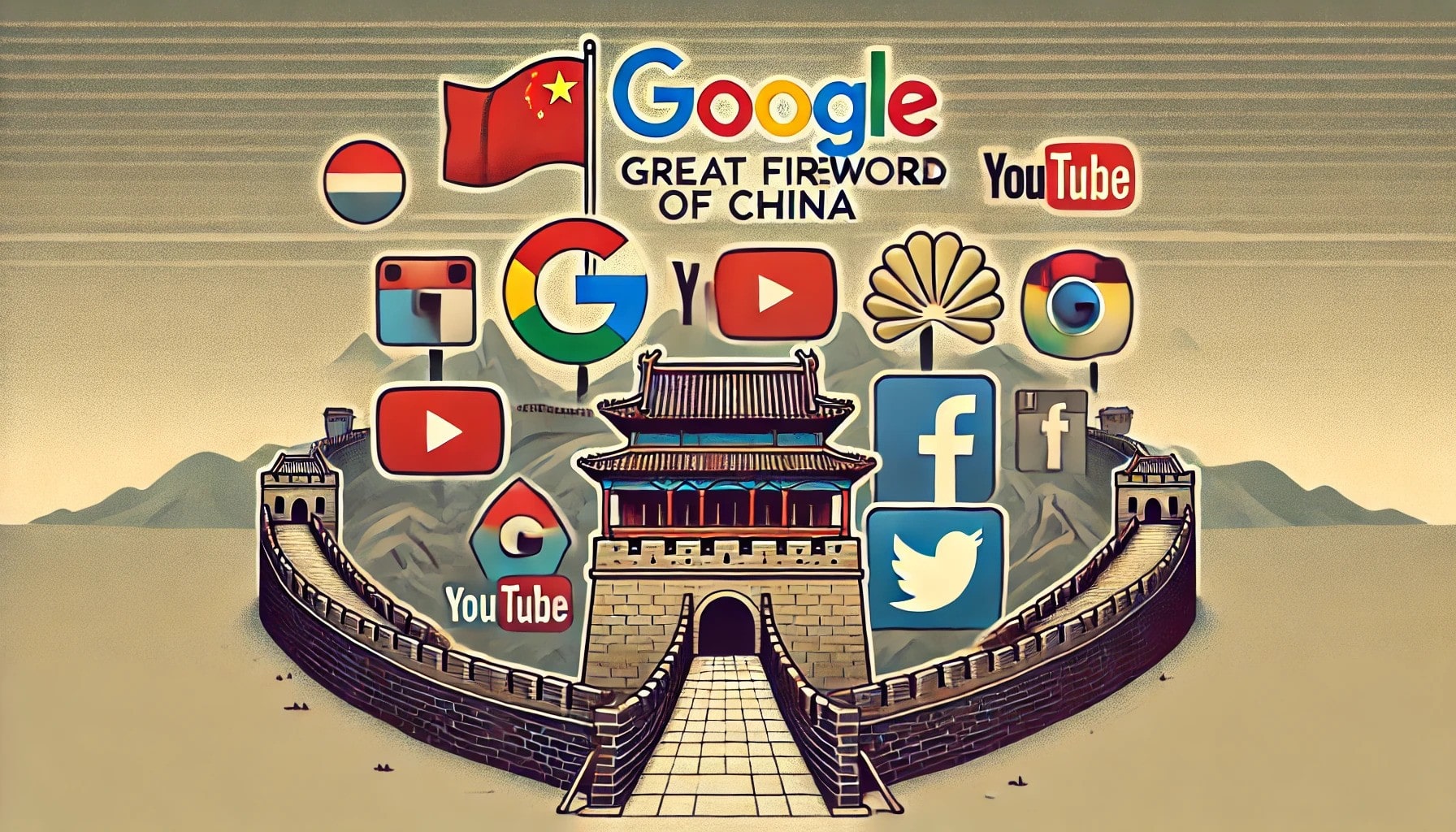China, an undisputed economic powerhouse with so much to offer... An industrial giant, an ancient culture, a mysterious mindset, a highly adaptable attitude—this is all China and about China. Its resilient economy and active efforts to embrace the digital transformation of the new age make the country one of the most desirable destinations for business expansion. There is one massive problem here though: how do you localize your content, website, etc. in Chinese (especially if you are a Western-language company)?
To make it easier for you, we've created a short overview of Chinese localization, main points of interest in Chinese and Chinese customers, and the best practices of this vital business process. Read on to expand your understanding of Chinese localization.
Some Chinese Market Stats Before We Begin
If you want to succeed in China, you need to understand the country's digital landscape. Here are six key stats to highlight current consumer behavior and internet usage in China:
Internet Users: As of June 2024, China boasts nearly 1.1 billion internet users. This amounts to an internet penetration rate of 78%.
Mobile Connectivity: There are approximately 1.76 billion active cellular mobile connections in China, which surprisingly reaches around 123.6% of the total population of the country.
E-commerce Growth: China's e-commerce market is projected to grow at a compound annual growth rate (CAGR) of 8.90% between 2024 and 2032, reaching around USD 4.77 trillion by 2032. Let's make this shocking comparison: the TOTAL value of the European and North American e-commerce markets is expected to reach only USD 5.2 trillion by 2032.
Cross-Border E-commerce: In the first half of 2024, China's cross-border e-commerce imports and exports reached 1.22 trillion yuan, or a 10.5% year-on-year increase. Impressive, isn't it?
Digital Payment Adoption: A significant majority of people in China prefer digital payment methods, with mobile payments accounting for over 80% of all online transactions.
Social Media Engagement: Chinese internet users spend an average of over 2.5 hours daily on social media platforms, indicating high engagement levels.
There are more benchmark indices out there to tell the story of China's economic might, naturally. But with these under our belt, we can focus on localization in Chinese.
Localization in China: It's All about the Language
What might set you back in effectively communicating with your target audiences in China is the language. The Chinese language is complicated, doesn't look anything like Western languages, and requires a native speaker and/or experienced translator to ensure it's right in the end. Here are a few noteworthy facts about Chinese:
It's a tonal language: For English speakers learning Mandarin, one of the biggest challenges is mastering its five tones (four main ones plus a neutral tone), as each tone can completely change a word’s meaning in this tonal language.
It's one of the most complicated languages to master: The United States Foreign Service Institute calculated that English speakers need to clock in 2,200 hours to conquer Chinese—fluency doesn’t happen overnight here!
There are multiple Chinese variants: The most well-known one is Mandarin Chinese but it's not the only one. Other languages/dialect variations include Cantonese, Hakka, Wu, and Hokkien.
| Chinese Variant | Number of Speakers | Primary Areas of Use | Unique Characteristic |
|---|---|---|---|
| Mandarin | Over 1 billion | Mainland China, Taiwan, Singapore | Official language in China, uses both Simplified and Traditional writing systems |
| Cantonese | ~85 million | Hong Kong, Macau, Guangdong Province | Retains more ancient Chinese pronunciations, uses Traditional characters |
| Shanghainese | ~83 million | Shanghai, Jiangsu, Zhejiang Provinces | Not mutually intelligible with Mandarin, despite close proximity |
| Hokkien | ~45 million | Taiwan, Fujian Province, Southeast Asia | Strongly linked with Taiwanese identity and culture |
| Hakka | ~30 million | Southern China, Taiwan, parts of Malaysia | Known for unique consonants and tonal variations |
More than 1 billion people speak Chinese: This ranks the language one of the most spoken languages in the world (some schools of thought put English above Chinese here).
It's an official UN language: Along with English, French, Spanish, Russian, and Arabic.
It doesn't have an alphabet: Surprising, but true!
Chinese is the world’s only modern pictographic language: A bit like ancient Egyptian hieroglyphics but with way more flair. Each character is a tiny image or drawing hinting at its meaning
Simplified Chinese vs. Traditional Chinese
But the varieties of Chinese are not all that is to it. Here's a head-scratcher for you: there are Simplified and Traditional versions of Chinese! The difference here lies solely with the way they are written. And thank God for that, the spoken forms are complicated as is!
Think of Simplified Chinese as Chinese on a time crunch, where characters have been streamlined to look less complex and make them simpler to learn and study. Traditional Chinese, on the other hand, is the fancy, full-dressed version, with each character taking us back in time (since that's their original forms). Simplified Chinese is mainly used in Mainland China and Singapore, while Traditional holds sway in Hong Kong and Taiwan.

But choosing one isn’t just a style preference—it’s an ideological choice too. If you go for Simplified, you’re aligning with Mainland China’s official script, which could ruffle feathers in places like Taiwan, where Traditional Chinese is seen as a symbol of heritage and identity.
Our word of advice: pay special attention to Chinese characters and scripts when launching a localization project for China. To simplify your workflow, we recommend using Translation Management Services (TMS) that can make sure that whatever variant you choose (or both), the keys and texts are written exclusively in it. Platforms like Localit offer separate options for Simplified and Traditional Chinese and an opportunity to invite native speakers or professional translators to collaborate on a project and proofread outputs within the platform. Try it here.

Screenshot of Localit's interface
More Key Things to Keep in Mind in Chinese Localization
There are, however, more things to keep in mind when localizing your products and offers for China and the Chinese market. They are largely linked to the tech restrictions and peculiarities of this part of the world as well as the mindset of Chinese consumers. There are three major things to pay attention to here:
Navigating the Great Firewall of China
One of the biggest challenges in localizing for China is choosing how to approach the Great Firewall, which blocks access to numerous foreign websites and services and can affect your website in China. Major companies like Google, Facebook, X (formerly Twitter) are inaccessible. Moreover, streaming giants like YouTube and Netflix are also forbidden, along with some news sites such as The New York Times, Reuters, The Washington Post, and The Economist. Even some Wikipedia articles are not safe from censorship! According to a study by Freedom House, China ranks as one of the most restrictive countries for internet freedom, with strict regulations on what users can access.

Sure, VPNs might let you peek over the Great Firewall, but if you want your content to thrive in China, you’ll need a more legit strategy. Hosting your site on local servers and playing by China’s regulatory rulebook keeps your content in the clear and avoids the dreaded block. And don’t forget speed—slow-loading pages can send users clicking away in seconds. With the right setup, though, your Chinese website won’t just exist in China’s digital landscape; it’ll perform smoothly and reach your audience without a hitch.
Understanding Cultural Sensitivities
China’s culture is as rich and layered as a scroll painting, shaped by thousands of years of tradition. If you want to make the right impression, understanding Chinese norms, taboos, and customs is a must. Here’s a cheat sheet to avoid any cultural missteps:
Colors and Symbols: Red is your best friend here—it’s all about positivity, success, and good fortune, like a permanent “good vibes only” sign. But steer clear of white, especially in celebratory contexts, as it’s linked to mourning and worn at funerals. Red invites joy; white, not so much.
Forms of Address: In China, respect is woven into language. Honorifics are used for colleagues, professionals, and even family members, and they often replace pronouns. It’s a way to show esteem and humility, so take notes on those titles—it’s like a built-in etiquette guide.
Lucky and Unlucky Numbers: Numbers carry big weight in China, and not all of them are welcome guests. The number 8 is a crowd favorite, symbolizing prosperity, while 4 is practically ghosted because it sounds like the Chinese word for “death.” Be cautious with digits in marketing—4 can end your campaign before it starts.
Family Values: Family holds center stage, with huge emphasis on respecting elders. This isn’t just polite small talk; reverence for one’s elders is baked into the culture. Brands that reflect these values score major points with Chinese audiences.
Topics to Avoid: Certain historical events and political topics are officially off-limits. For instance, references to Tibet in English descriptions are a no-go, and some topics are so sensitive, they’ve been erased from the public conversation entirely. If in doubt, leave it out!
Taking note of these cultural cues can make all the difference in how your message lands.
Different Digital Landscape
Many of the go-to websites and apps we know in the West don’t exist in China, which means getting familiar with a whole new digital landscape. Selling in China means adapting to these unique online platforms—and with over a billion internet users, it’s a worthwhile venture.
Chinese Search Engines: Google who? In China, it’s all about Baidu, Sogou, Shenma, and Haosou. Baidu, also sometimes referred to as the "Google of China", does lead the pack, but each search engine has its own niche. To rank on these platforms, you’ll usually need a website hosted in China and written in Simplified Chinese. Even Bing has made a bit of progress here, though it’s still far from the top position.
Mobile-First Nation: Nearly everyone in China is surfing the web on their mobile phones, so if your site isn’t mobile-friendly, it’s like it doesn’t exist. Chinese users love all-in-one shopping sites that offer a range of brands, and buying straight through social media is common. QR codes are king for payments—swipe, pay, and go! In addition to in-app payments with mobile carriers like China Telecom, China Unicom, and China Mobile, Alipay and WeChat Pay reign as the top mobile payment methods in China.
Power of Social Media and Influencers: Chinese social media is a world of its own, where influencers have serious pull and people regularly make purchases via popular Chinese platforms like WeChat and Weibo. Influencers (or Key Opinion Leaders, KOLs) are major players, so a shoutout from the right one could be gold for your brand.
Localize Like a Pro: Guidelines
Design and Layout
First off, text in Chinese takes up about 30% less space than English, so you’ll have more room to work with. But before you get too excited about empty space, think again: minimalist design is not a fan favorite in China. Many Chinese apps are typically packed with information, colors, links, and text, all working hard to show users every possible function at once. While Western users may prefer a sleek, uncluttered look, Chinese users are accustomed to vibrant, information-rich layouts with animated interface elements galore.
Color Choices
Color is king in China—bright, saturated hues catch attention, especially in the gaming industry. Say goodbye to dark colors, browns, and grays; they just don’t resonate here. Red, a color of luck and prosperity, is always a winner, while white is generally avoided as it’s linked to mourning. Colors in China carry meanings that differ significantly from those in the West, so it’s wise to choose a palette that aligns with local preferences.
Interaction and User Engagement
Chinese users interact with apps differently, and this means rethinking your calls-to-action. “Buy now” buttons don’t get the same traction here; instead, “share” is the magic word. Social sharing is huge, and users prefer prompts that let them engage with friends over direct sales nudges. QR codes are also everywhere, from shopping to promotions. Almost every app integrates them, so take advantage of these popular tools to boost user experience.
Formatting and Locale-Specific Details
Now for the nitty-gritty: dates are written year-month-day, and time can be either 24-hour or 12-hour with an “AM/PM” equivalent (上午 / 下午). Currency in China is yuan or RMB (¥), with commas as thousand separators, and they use the metric system for measurements. In terms of names, the family name comes first, usually followed by a single-character given name—one of those little things that shows you’ve done your homework. When dealing with addresses, start with the country, then the province and city, down to the street name.
Here’s a quick checklist of DO’s and DONT’s to help guide your localization strategy:
| DO’s | DONT’s |
|---|---|
| Use bright colors like red to attract attention | Avoid dark colors or neutrals like brown and gray |
| Optimize text for Chinese to take up less space | Don’t leave empty spaces—use layout-rich design |
| Integrate QR codes for promotions and sharing | Don’t push “buy now”—use “share” to engage |
| Consider cultural color meanings (e.g., red = good) | Avoid unlucky numbers (especially the number 4) |
| Adapt date, time, currency, and address formats | Don’t ignore name order and the Chinese character system for numbers |
With these little details down, your localization project is bound to be a success if you put in the work. As they say in China, 一分耕耘,一分收获 (one minute of hard work—one minute of harvest, or no pain, no gain as we all more likely to know it).
Conclusion
Mastering the localization process for the Chinese market is a bit like learning to dance to a whole new rhythm. From website localization to picking between Simplified and Traditional Chinese, understanding the ins and outs of what’s important in China will make your brand feel at home in a market that’s rich, dynamic, and distinctly unique. Getting it right means tapping into the quirks of local culture, using the right colors, and even rethinking your app’s design, all while making sure your content isn’t blocked in China.
Whether it’s optimizing a website or crafting a localized Chinese version of your app, remember that there’s no shortcut to building trust with users in China. Invest time in understanding the platform preferences inside China, respect cultural nuances, and embrace the mindset that makes the market in China so compelling. With some savvy tweaks, your brand can make a lasting impact and find a warm welcome within China’s digital landscape.

 The Ultimate Guide to Software Localization: Localize Software with Best Practices
The Ultimate Guide to Software Localization: Localize Software with Best Practices AI Localization: How Artificial Intelligence Is Changing the Landscape of Localization and Translation
AI Localization: How Artificial Intelligence Is Changing the Landscape of Localization and Translation Localize Like a Pro: How to Choose the Right Localization Languages for Your Business?
Localize Like a Pro: How to Choose the Right Localization Languages for Your Business?